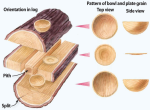steve ramsey
Member
- Messages
- 533
- Location
- Lafayette, IN
Just cut down a cherry that was dead and close to the shop. I am curious about everyone opinion as to the best way to prep these for turning. 
Sizes range from +/-12" to 18" . Seems like there are as many options as there are turners as to the best storage method. I do not have a kiln so that option is out and don't really have room to store them inside but I may have to make room. At a minimum I think I need to cut them vertically to sizes for bowls and paint the ends. What are everyone's thoughts.

Sizes range from +/-12" to 18" . Seems like there are as many options as there are turners as to the best storage method. I do not have a kiln so that option is out and don't really have room to store them inside but I may have to make room. At a minimum I think I need to cut them vertically to sizes for bowls and paint the ends. What are everyone's thoughts.



